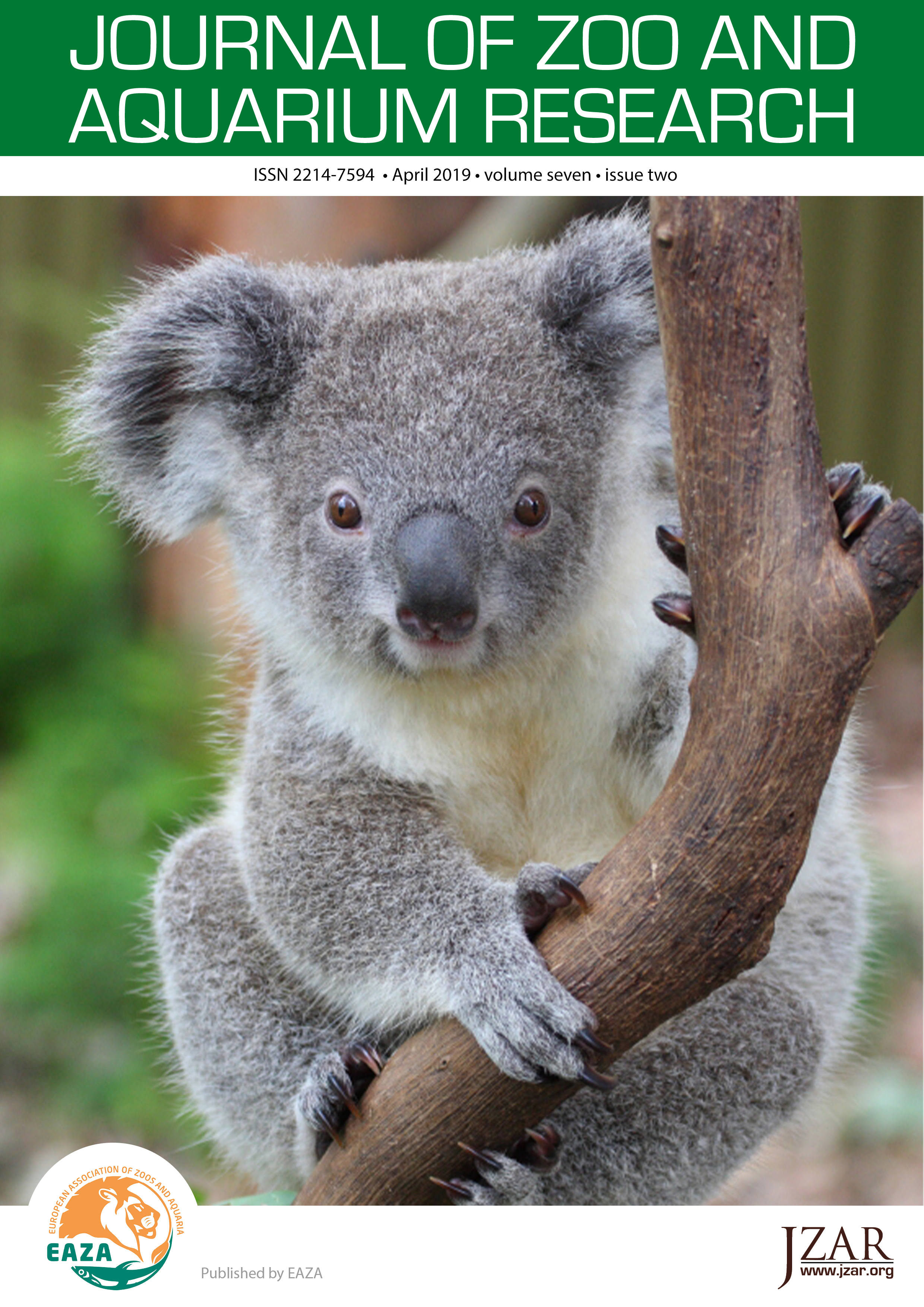Are "visitor effects" overestimated? Behaviour in captive lemurs is mainly driven by co-variation with time and weather
DOI:
https://doi.org/10.19227/jzar.v7i2.343Keywords:
Activity budget, captivity, Lemur catta, time of day, zoo animalsAbstract
The concept that visitors affect behaviour of captive animals has interested zookeepers since the 1960s. However, to date no studies on “visitor effects” have allowed for time of day and weather, which can affect behaviour directly and frequently co-vary with visitor numbers. Here, we examine visitor effects on captive ring-tailed lemurs Lemur catta in a walk-through enclosure, where potential for visitor effects is especially high, while specifically allowing for time/weather. Time, weather and visitor variables interacted in complex ways, but time and weather exerted the strongest effect on behaviour. Weather strongly affected resting (~80% of activity budget in rain versus 31% otherwise) as well as feeding/foraging and locomotion. Sunbathing was higher in mornings; locomotion increased in afternoons. Visitors numbers were negatively associated with feeding/foraging and sunbathing; visitor activity was positively associated with locomotion and alertness. Crucially, however, “visitor effects”, were very small both in absolute terms and in relation to underlying effects of time/weather. Univariate models suggested visitors accounted for ~20% of behavioural variation but after time/weather had been included, this dropped to ~6-8%. We conclude underlying visitor:time and visitor:weather correlations mean that visitor effects are very easy to overestimate and offer recommendations to ensure findings on other species are appropriate and robust.
Downloads
Published
How to Cite
Issue
Section
License
JZAR fulfils the DOAJ definition of open access and provides free and open access to the full text of all content without delay under a Creative Commons licence. The copyright holder of JZAR publications grants usage rights to third parties, allowing for immediate free access to the work and permitting any user to read, download, copy, distribute, print, search, or link to the full texts of articles.







